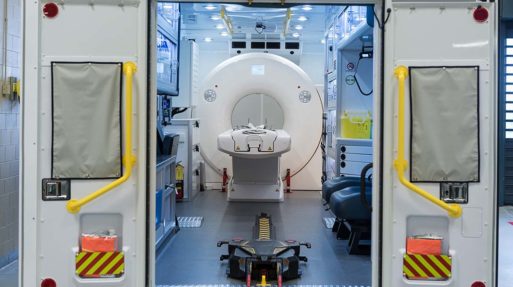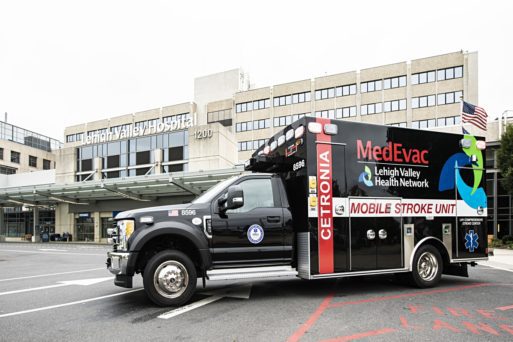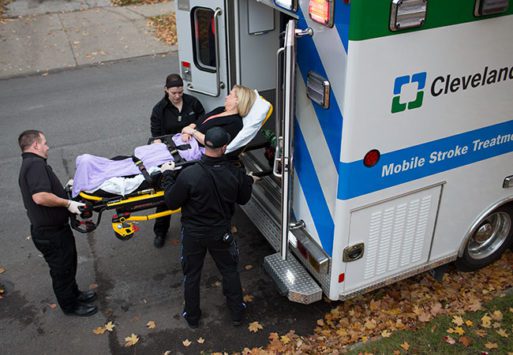
The interior of a mobile stroke unit
Credit: Northwestern Medicine
When someone experiences a stroke, every second becomes precious. Those moments could mean the difference between recovering completely or having debilitating consequences. Many patients who wait for an ambulance and subsequent care in an emergency room don’t get the necessary treatment in time. But new mobile stroke units are proving much more effective at preventing serious health issues post-stroke.
Stroke is one of the leading causes of disability worldwide. All major strokes impact mobility, which can strip the victim of independence and freedom. Physical disabilities after a stroke can include loss of speech, loss of movement on one side of the body, an inability to control the bladder or bowels, or the inability to swallow. These physical issues often lead to a sense of frustration and depression.

The Difference Mobile Units Make
However, mobile stroke units can severely decrease the negative physical consequences of stroke. The unit contains everything paramedics need to immediately treat the stroke. Receiving care from a mobile stroke unit essentially brings the hospital to the patient. Each unit is equipped with a CT scanner, laboratory and stroke medications, which all work together to help improve outcomes and sometimes save the patient’s life. According to the American Stroke Association’s International Stroke Conference 2021, patients who received clot-busting medications and treatments from mobile units experienced significantly easier recoveries than those who received traditional treatment in emergency rooms.
Studies show that within the first hour after a stroke, the brain is not yet irreversibly damaged. Meaning, if a patient can be treated within that one-hour window, many post-stroke symptoms and disability can be avoided. The American Stroke Association’s study revealed that of those who were treated by mobile stroke units, 53% of patients had recovered completely within three months of the stroke.

A patient is wheeled into a mobile stroke unit
Credit: Russell Lee Photography
How can you take advantage of this service?
At this time, mobile stroke units are only available in a few cities across the U.S. Due to their cost, many hospitals have not been able to invest in a unit as of yet. However, since the American Stroke Association has found the mobile units exponentially help the patients in their recovery process, hopefully more units will be added.
Currently, there are units in Houston, New York City, Indianapolis, Los Angeles, Memphis, Aurora, Colorado and Burlingame, California. If you live in one of these cities, it’s important that the person calling 911 knows the signs of a stroke and conveys them to the operator at the time.
The American Stroke Association lists the major signs with the easy-to-remember acronym F.A.S.T.:
- F – Face drooping,
- A – Arm weakness,
- S – Speech difficulty, means
- T – Time to call 9-1-1.
Since time can translate into the quality of life a stroke patient experiences after the episode, it’s important to call as soon as you observe these signs. Mention the three physical symptoms and let the operator know you believe the patient is experiencing a stroke.
The Future of Stroke Care
In addition to the introduction of MSUs, researchers are searching for other ways to preserve brain function after a stroke. According to Dr. Albert Favate, M.D., of NYU Langone Health, one of the most promising is an intravenous neuroprotective agent that can be administered to protect the brain from the effects of a stroke for up to 24 hours. However, even such an agent will work better if it is given as soon as possible after the stroke.

 Mobile Stroke Units Are Improving Outcomes for Stroke Victims
Mobile Stroke Units Are Improving Outcomes for Stroke Victims


 “As Tears Go By” by Marianne Faithfull
“As Tears Go By” by Marianne Faithfull
 “The Sea” by John Banville
“The Sea” by John Banville
 Funeral Favors Offer Visitors a Tangible Memento
Funeral Favors Offer Visitors a Tangible Memento















